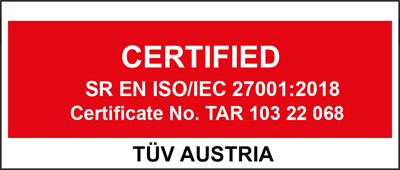Blog

Why invest into your customers coming back and how to do it using SOP
Listen to any speech by a famous entrepreneur or savvy investor, read any business book or magazine and you will find steps, lists, tips and tricks, and many industry “secrets” on how to make your business better and more profitable faster or right now. However, you must not forget about the basics – many factors contribute to a company’s success, and nobody can argue against the importance of customers. To grow, a business must attract new customers, but it must also make sure that customers come back to buy its products and services again and again.
Why focus on customers coming back?
Once you converted a visitor to a new customer, your relationship has begun. Like any relationship, it will be more rewarding and long-lasting if you nurture it. How will your efforts to keep this new customer engaged be rewarded? Here’s the three main reasons why you should put in the work to keep your customers coming back:
- They’re more open to what you have to offer
A customer who already had a good first interaction with your company will be more willing to explore other products and services that you have on offer. Furthermore, they might feel more compelled to take advantage of your promotions and deals.
- They will recommend you to their friends
Today’s customers no longer trust salespeople or ads when choosing the brands they work with or buy from, and instead look for advice from friends, family, and even strangers (who among us hasn’t looked at reviews online before buying a product?). This means that customers with a history, whose experience with your brand is consistently positive, have the power to attract new customers to your business.
- They cost less and bring you more money
While this depends on the industry, research indicates that acquiring a new customer can be up to five times more expensive than keeping an existing customer loyal to you. Furthermore, existing customers buy more than new customers, spending 31% more on products, and are 50% more likely to buy a new product than new visitors.
When do customers come back and when do they leave?
Customers return when there is an established relationship of trust between them and a company. Trust is built with consistency and transparency – a company delivering the same quality services and products keeps customers coming back, because they know they can expect quality and not be disappointed.
To encourage repeat customers, you can do several things, such as improving the quality of your products, being consistent with your presence on social media, and focusing on improving your customer service. According to a 2018 survey on customer service expectations, almost 70% of customers say they are willing to pay for more expensive services and products when they are delivered by a brand known for the quality of its customer service.
While it is easy to say that you should work on several aspects of your business to keep customers interested, the truth is that a company’s ability to deliver quality and stay consistent can be challenged in many ways during day-to-day operations.
This is especially the case when employees choose their own methods of dealing with the tasks and issues they encounter daily in their work, with too little guidance from the company’s management. This way of doing things is one of the main factors behind the most common scenarios that make a company look unprofessional and drive customers away:
- Poor communication and lack of responsiveness to complaints
- Poor solving of issues
- Delays in response or delivery of services and products
- Products and services that lack quality.
How to improve your operations using SOPs
To avoid the issues mentioned above, many employers create standard operating procedures (SOPs, for short) through which they can guide the employees to perform their job correctly and on time, while respecting quality standards and regulations, and maintaining a coherent voice in communicating with customers. Procedures save the time spent figuring out how to perform a task, and the time wasted on fixing problems when the incorrect solution or way of doing things is applied.
Now, you may ask yourself, how difficult is it to set up operational procedures in your company?
Getting started with SOPs depends on the size of the company, its activity, and the tools used to manage procedures. This is because a procedure can consist of a simple list of steps, or a series of interconnected documents that need to describe, in minute detail, different activities that depend on or lead to one another.
You will likely need to consult several people to understand how they do things before you are able to create a detailed and easy-to-understand procedure. And, of course, you will need to create multiple procedures, of which at least a handful will be more complex and interconnected.
Then, there is the matter of your employees being aware of the procedures, staying updated on any changes or new procedures, and applying them, without missing any steps, each time they encounter a given situation.
Writing procedures in a document on the computer and printing out a manual for all employees might work when your team is small (3-5 people), you all work in the same location, and there is little variety in your operations. But what can a growing business do when it consists of multiple teams, across different departaments, and several dozens of procedures that need to be followed by people who work remotely, or in different shifts?
To write and manage the procedures that are vital for their business, many business leaders take advantage of technology and use an automated solution for procedures, such as SOP. This procedure management application:
- allows you to easily build, update or delete procedures without any prior knowledge or experience of procedures
- keeps everyone up-to-date by sending out notifications when procedures’ content changes
- helps your employees be prepared to deal with anything when it comes to customers and more, because they always have access to the procedures they need.
So, now that you know how valuable return customers are for your business, you can focus on making those changes – we believe it all starts with creating procedures! – to drive customer loyalty and reap the benefits.





